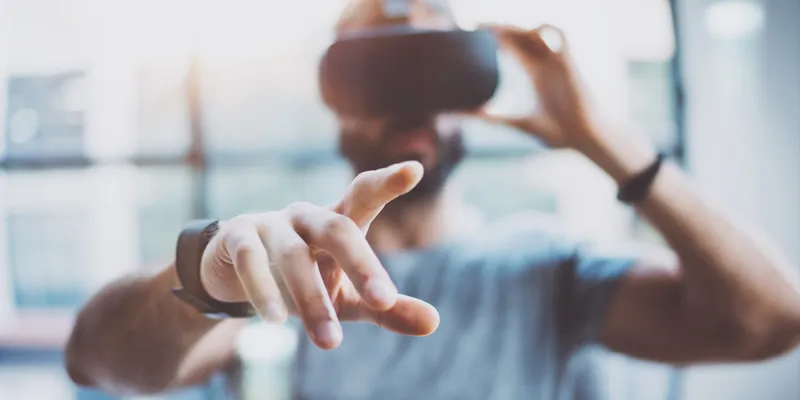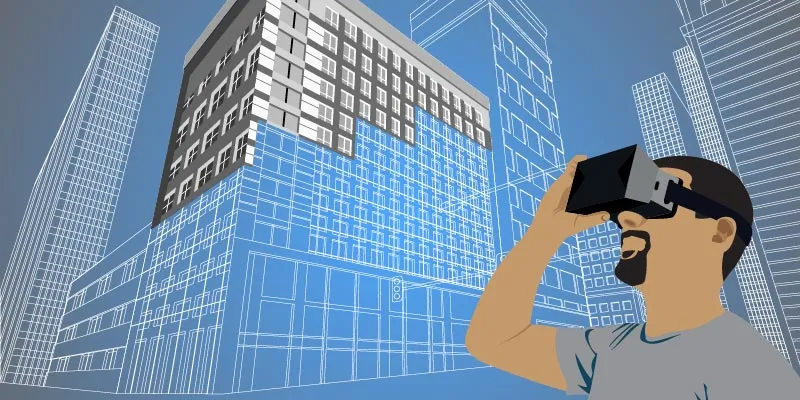How 2018 saw AR/VR move beyond gaming and enter retail, real estate, and our daily lives
This year has definitively answered a question that had been plaguing the AR/VR industry for a while: is it a fad or a real business proposition? From buying clothes to buying houses, AR/VR is making an appearance in applications beyond gaming and is now closer home than ever before.
Until recently, augmented reality (AR) and virtual reality (VR) were mere concepts being showcased at marquee tech events in the Valley, or reserved for the creation of that elusive “futuristic” product that no layman could get his hands on. While the dream-like possibilities presented by these “immersive” technologies wowed the world, questions around their practical utility continued to haunt creators and innovators.
Gamers have strapped on their VR headsets with swagger for a while now but cynics wondered if it was a mere fad or an exciting new business proposition? Would there ever come a time when AR/VR moved out of research labs and gaming zones, and reached the common man? 2018 has gone on to prove that the answer to that is a resounding ‘yes’.

A report by GrowthEnabler (a data and intelligence firm tracking tech startups) estimates that the domestic VR/AR market could be worth $100 billion-$120 billion by 2021. Gartner predicts that by 2019, AR, VR and mixed reality (MR) solutions will be evaluated and adopted in 20 percent of large-enterprise businesses.
As Richard Dulude, Principal & Investment Manager at Underscore.VC says, AR/VR will do for experiences what the internet did for democratising information.
Sure enough, this year has been about the penetration of AR/VR into the mainstream across sectors and into customer interactions and experiences, as well as cross-industry collaboration. The enormous advancement in visual and imaging technologies has made it possible for a majority of industries from manufacturing and retail to healthcare and education to communication and entertainment to feel the impact of AR/VR.
Here are a few distinct AR/VR trends that emerged this year.
AR transforming retail and how we shop
AR has heralded a new era of “experiential” retail that is essentially changing the way products are bought and sold. Retailers are offering enhanced customer experiences by integrating AR solutions - both in-store as well as online.
For instance, a furniture retailer or a car dealer can use AR to create live product demos for its shoppers. Or an online fashion or beauty brand could help customers try on a top or a lipstick almost as if it was an in-store, in-person trial.

AR is essentially allowing enterprises to “augment” retail trials and catalogues for their customers, thus offering a much richer and close-to-life shopping experience. Furniture retail giant IKEA, which opened its first India store this year, has created immersive VR-led showrooms where products can be viewed in 3D. It is working with a few homegrown startups to enable that experience for Indian customers.
Kanav Singla, Cofounder & CEO of Adloid (an AR startup), tells YourStory,
“This technology has existed for several years. But, it was not smart enough. Now, cameras can understand and interpret surroundings in a way humans do.”
AR-led cameras have eliminated the need for big showrooms or huge TV screens installed at brick-and-mortar outlets. Recently, Amazon integrated an AR shopping experience in its iOS app (not yet available in India). Even Mukesh Ambani-led Reliance Industries is reportedly working on stores that combine traditional retail and AR. Ambani announced at an AGM that Reliance’s “biggest growth opportunity was in creating a hybrid, online-to-offline new commerce platform.”
Another domestic startup Preksh has developed a technology that enables customers to virtually walk through offline stores on phones or tablets, pick products off the shelves and then complete the purchase online. It has even worked with leading US retail chain Target for this purpose.
VR in real estate and construction
VR has moved on from being a niche, geeky, gamer-driven tech and reached our living rooms. Be it live sports or house-buying, VR has a role to play. There’s been a spurt of VR startups in India too. According to GrowthEnabler, the domestic VR industry will grow by 76 percent in the next five years.

Architects, engineers, and real estate developers are using VR to simulate real-life experiences for people even before a project has reached completion, thus helping house-buyers choose better, and eliminating the gap between expectation and reality.
In March, leading property portal Magicbricks set up India’s first real estate experience centre in Mumbai to ease the struggles of house-buyers who want something more than just flat two-dimensional layouts. Using a combination of AR and VR, it allows customers to experience their future housing societies even before completion.
Real estate developer Lodha Group has roped in VR startup Meraki Studios to enable virtual walkthroughs in its properties in Palava - an upcoming smart city 45 kilometres off Mumbai. House-buyers can enjoy interactive walkthroughs of a construction site, soak in the aerial views of the surroundings, understand the inter-tower spaces, and amount of sunlight entering into the rooms, etc.
AR changing live entertainment and TV
Live television is another area being transformed by AR. Along with AI-led drone cameras, AR is revolutionising sports broadcast world over. Mumbai-based startup Quidich Innovation Labs is one player enabling such experiences for viewers.

Rahat Kulshreshtha, Cofounder of Quidich, explains:
“We are doing player tracking using drones, and offering augmented graphics and image analytics on top of that. So, the player wagon wheel now becomes 3D. The commentators can also talk to audiences better. If you add a virtual camera, it gives the impression that anchors are seated on top of a stadium, whereas they are still seated in the studio.”
For the first time in 10 years of the Indian Premier League (IPL), matches were showcased in an AR environment, and Quidich helped Star India, the event’s official broadcaster, enable it for viewers. Multiple other sports and live events like concerts, comedy shows, etc. can benefit from this tech.
VR aiding recruitment and hiring
Organisations are increasingly using VR-led solutions to eliminate human bias in recruitment and improve the quality of hires. VR-based assessments or tests allow HR managers to put a potential recruit in close-to-reality situation helping them gauge their talent or abilities more accurately.

According to Recruiter (a recruitment news and intelligence platform),
“VR-based job simulations allow recruiters to step away from dialogue-driven interviews and focus on a more tactical, raw skills approach to learning about candidates.”
So, instead of asking a person how they would manage a tough organisational situation, recruiters can actually put the candidates in that situation through a simulated VR setup. Then there are VR office tours. Talent managers give candidates a chance to experience a typical day in their organisation. It helps job applicants see if their expectations are aligned with organisational realities.
Intuit, for example, created a VR experience on its work culture before it went hiring in US universities. Intuit’s Director of Talent Acquisition, Brett Coin, wrote on Medium, “Right now, it’s all about thinking past transactional or relational recruiting. We must approach it with an experiential mindset.”
AR/VR in medical training
Possibly, the most significant intrusion of emerging technologies like AR/VR has been in the field of medicine. Mixed reality solutions are making their presence felt in diagnostic labs, surgical suites, doctor clinics, medical training institutes, and so on.
For instance, if you’re a medical student getting trained in surgery or other intrusive procedures, AR/VR helps simulate a near-accurate setting. These technologies, which use 3D mapping and imagery, enhance doctors’ understanding of the complex human anatomy.

A recent Stanford University study reveals that VR imaging gives radiologists more confidence in diagnosing an ailment. It also helps doctors gain more clarity and conviction, especially during complex surgical procedures.
Earlier in 2018, AjnaLens, India’s first own AR headset, rolled out one of the world’s most advanced 3D mapping systems, where digital holograms seamlessly integrate with the outside environment. So, if a part of the anatomy is being dissected or an organ is being scrutinised, it feels real and immersive.
Nitin Goyal, MD, Orthopaedic Surgeon, Founder & CEO at Pulse Care, summed it up well. He says, “Virtual reality is here, and it’s changing medicine in some very fundamental and exciting ways. Collaboration, treatment, and patient satisfaction are all going to benefit heavily from the tools VR gives us in the very near future.”







